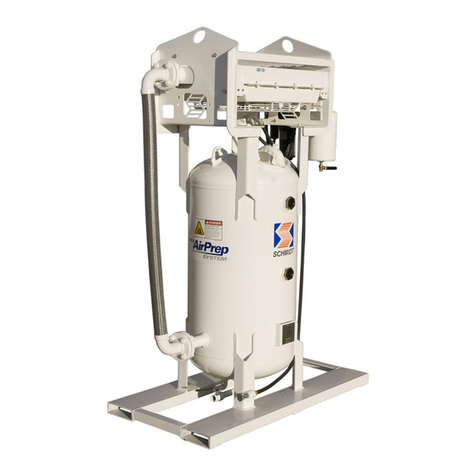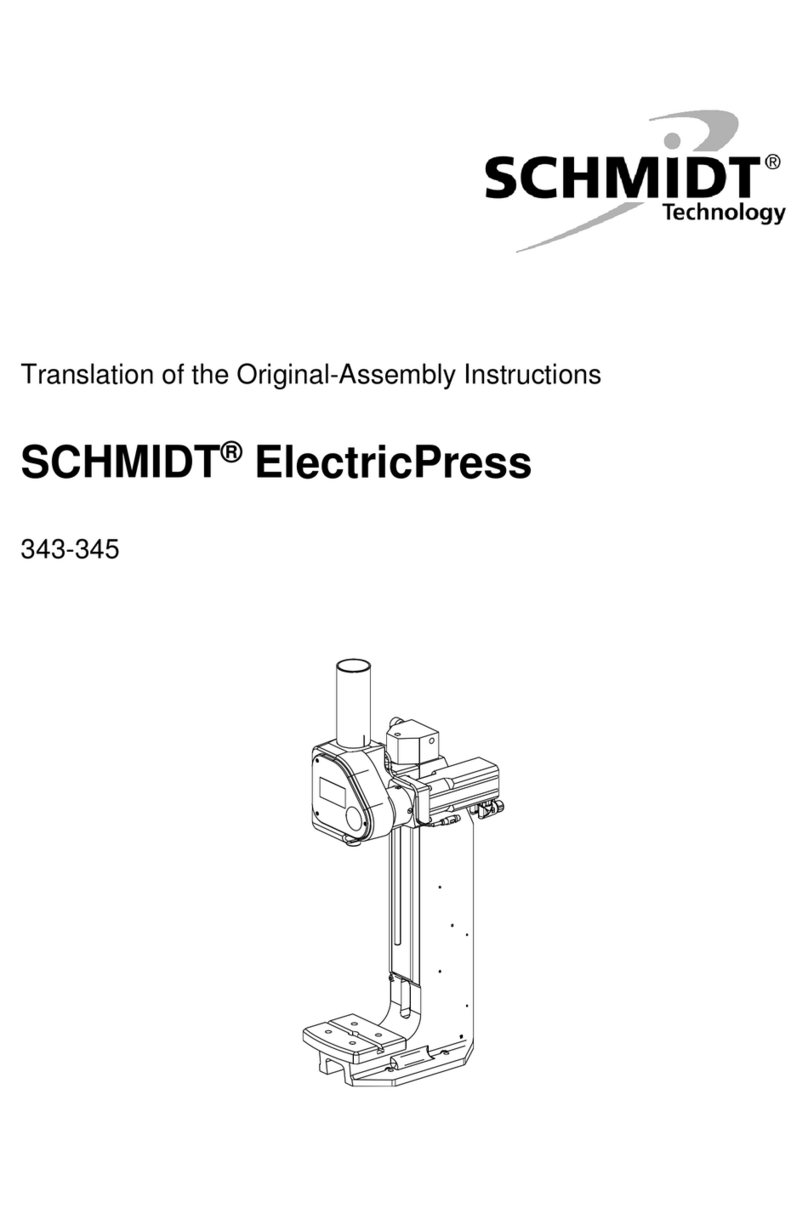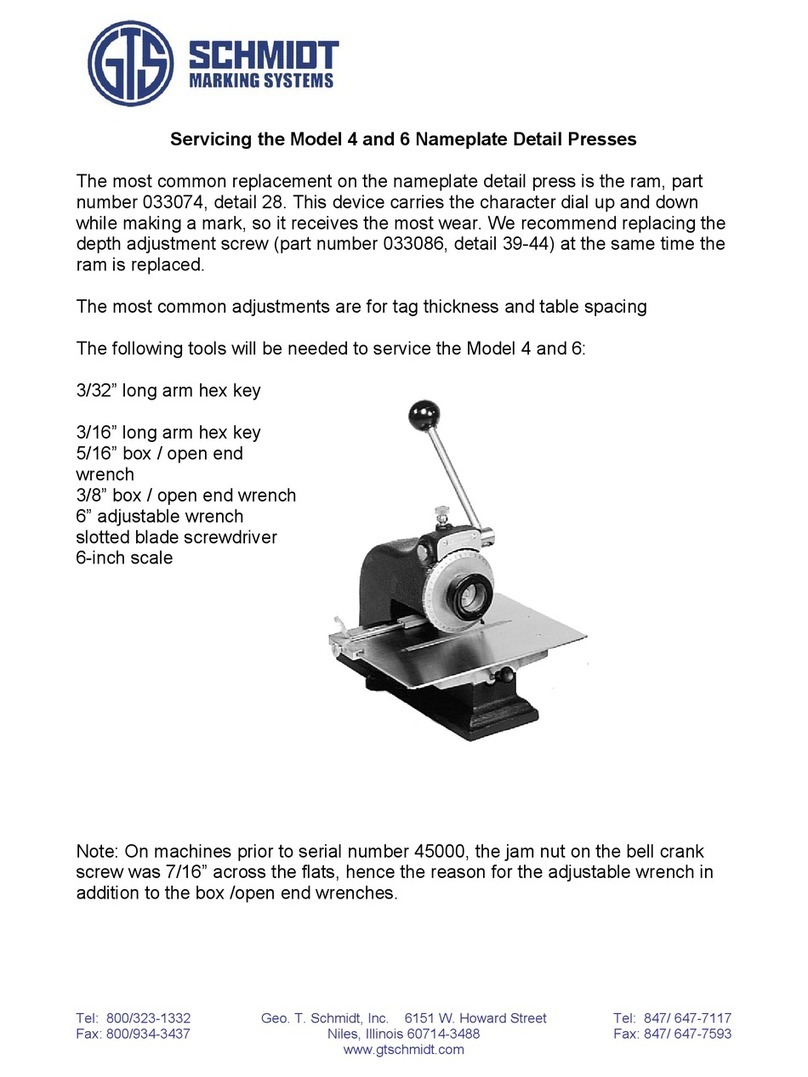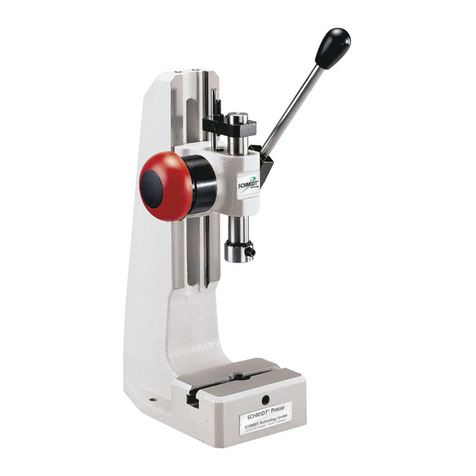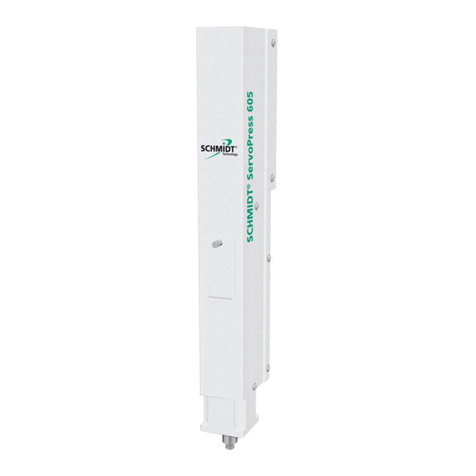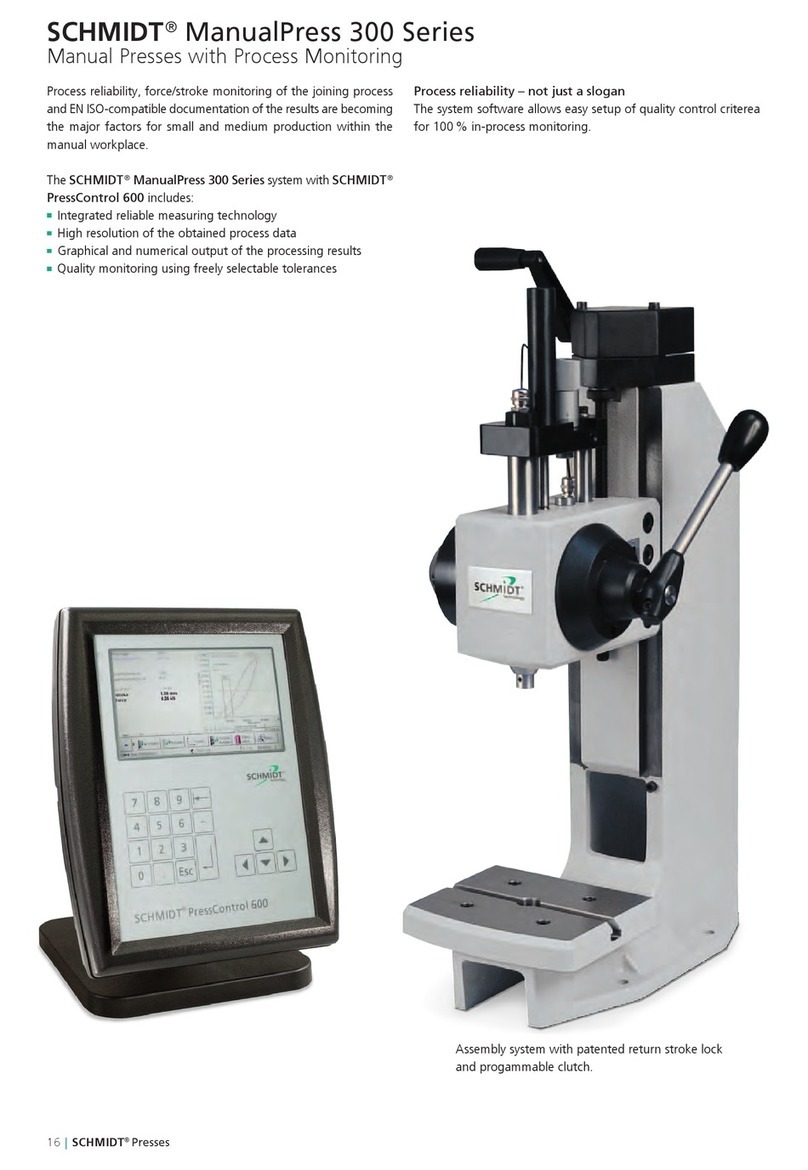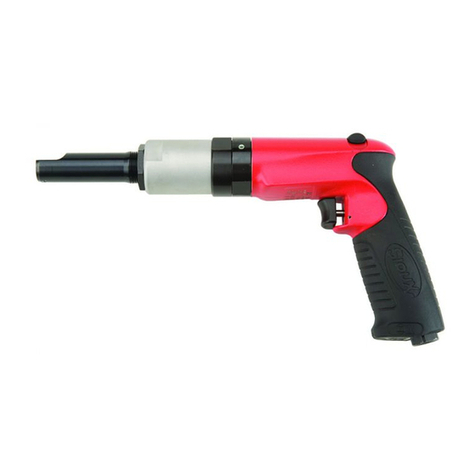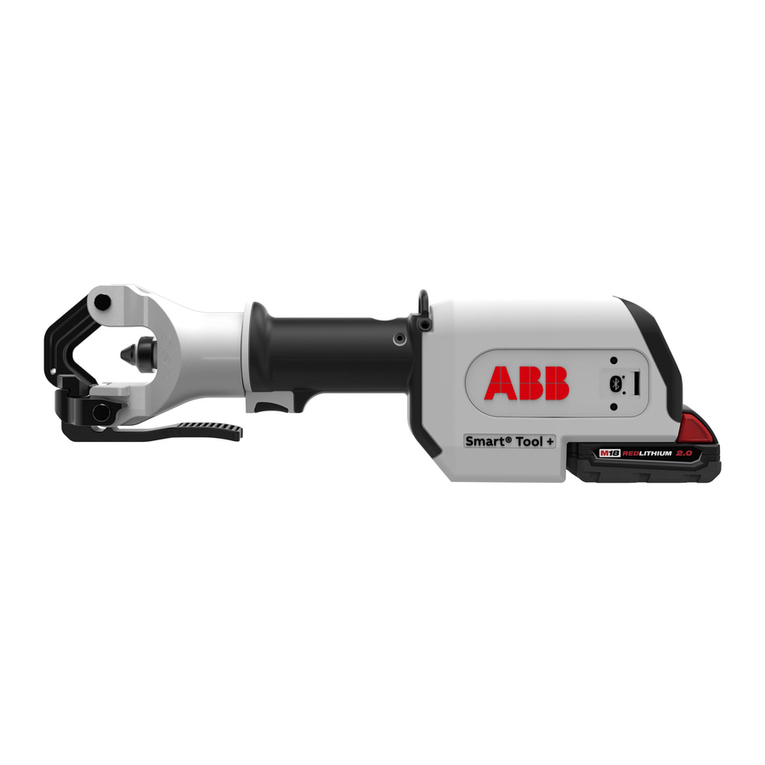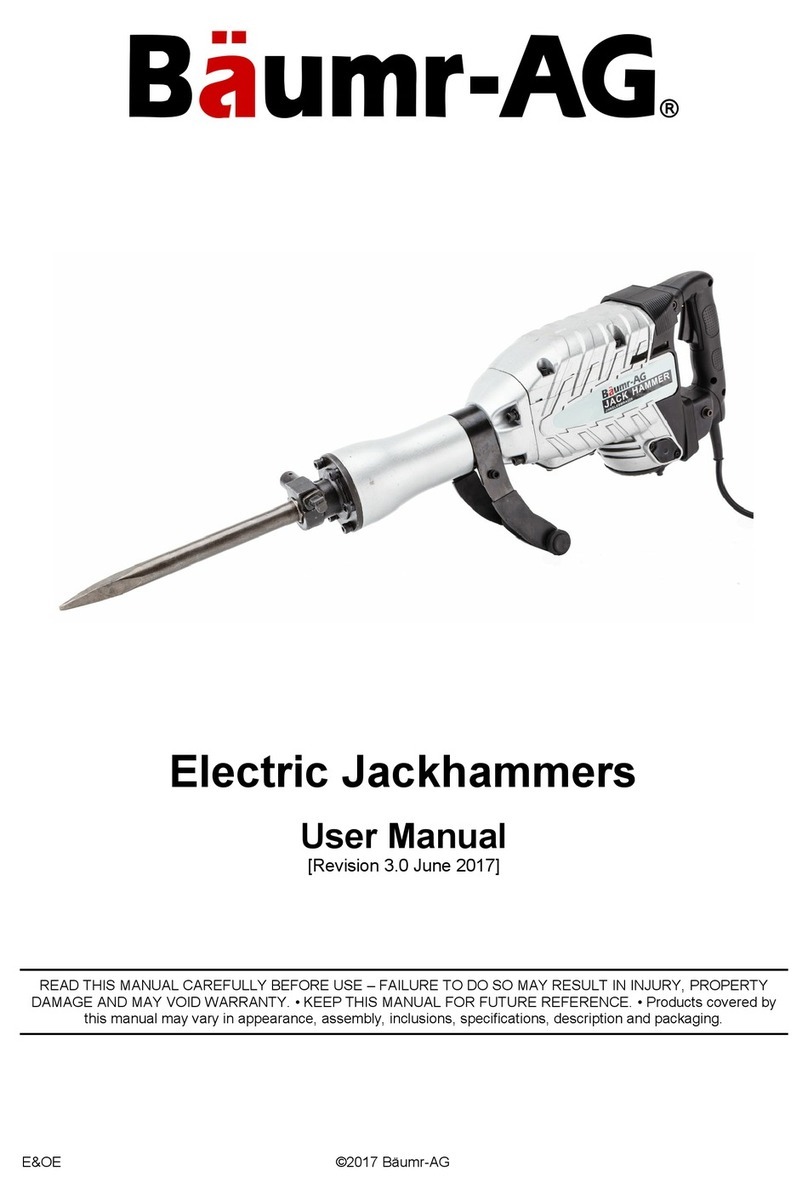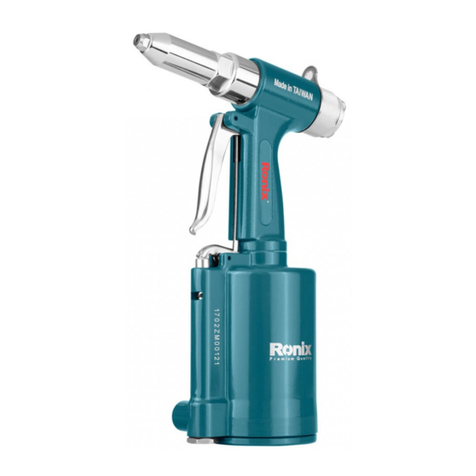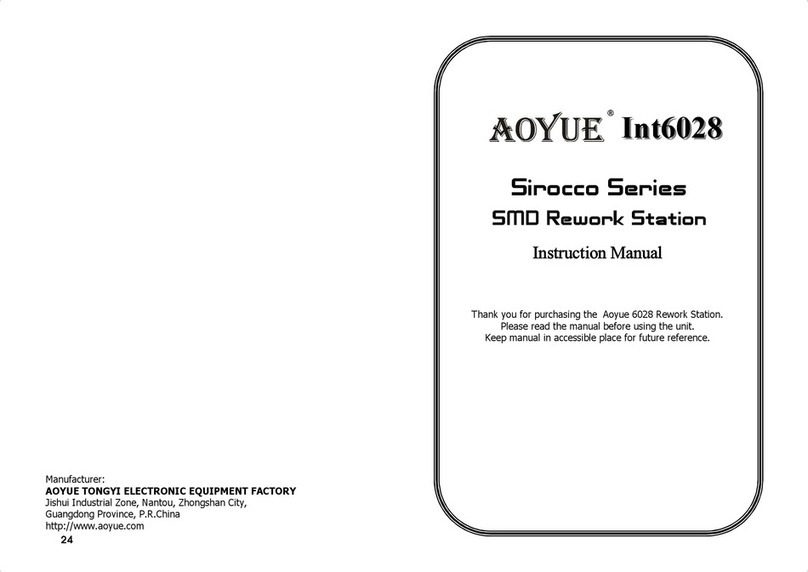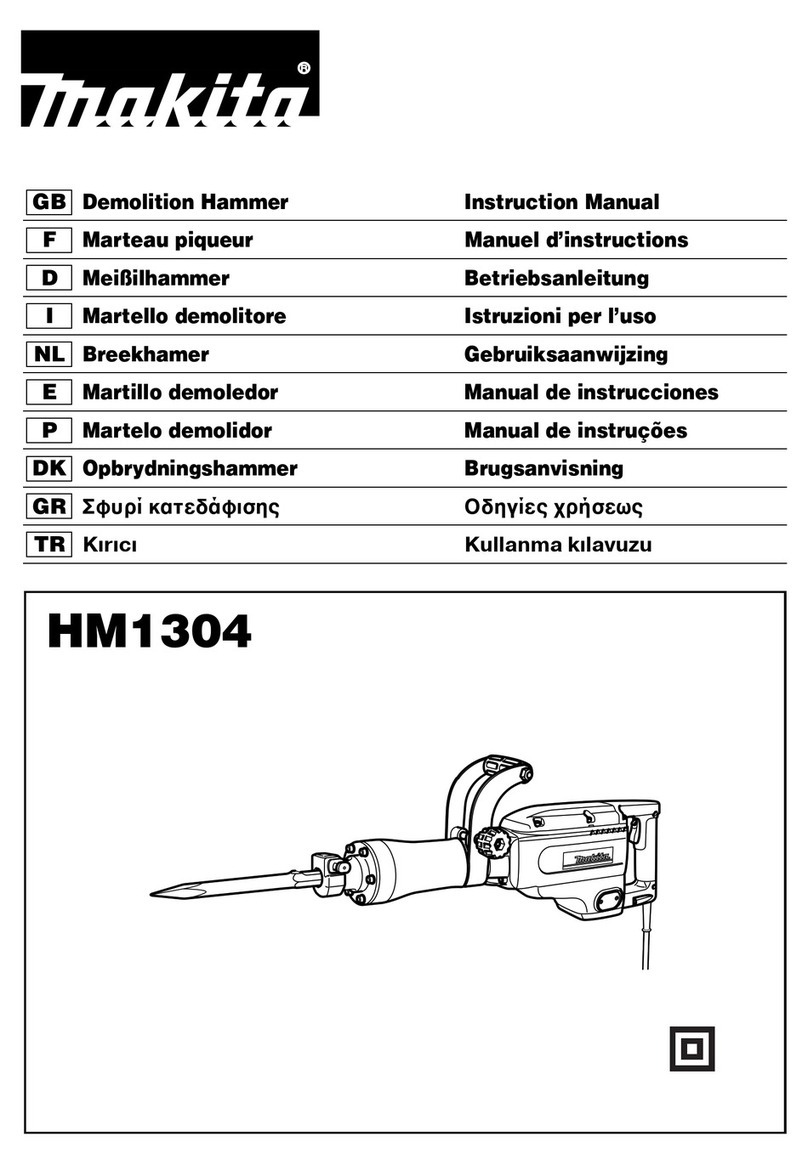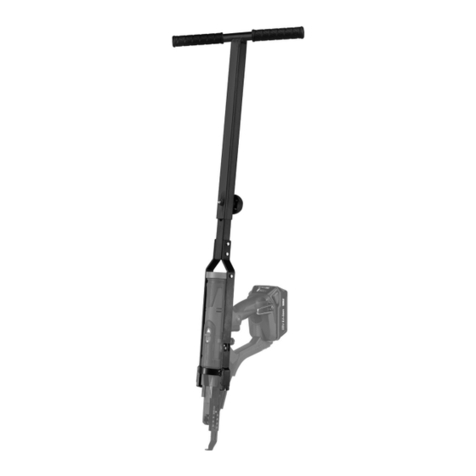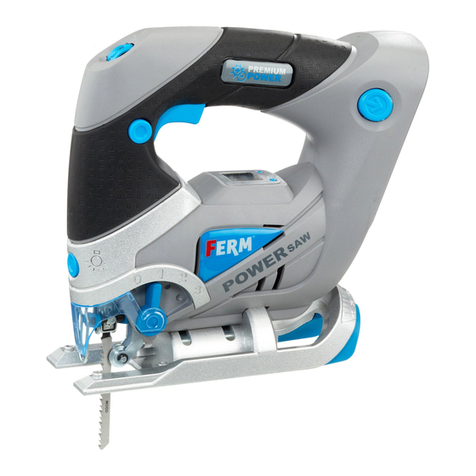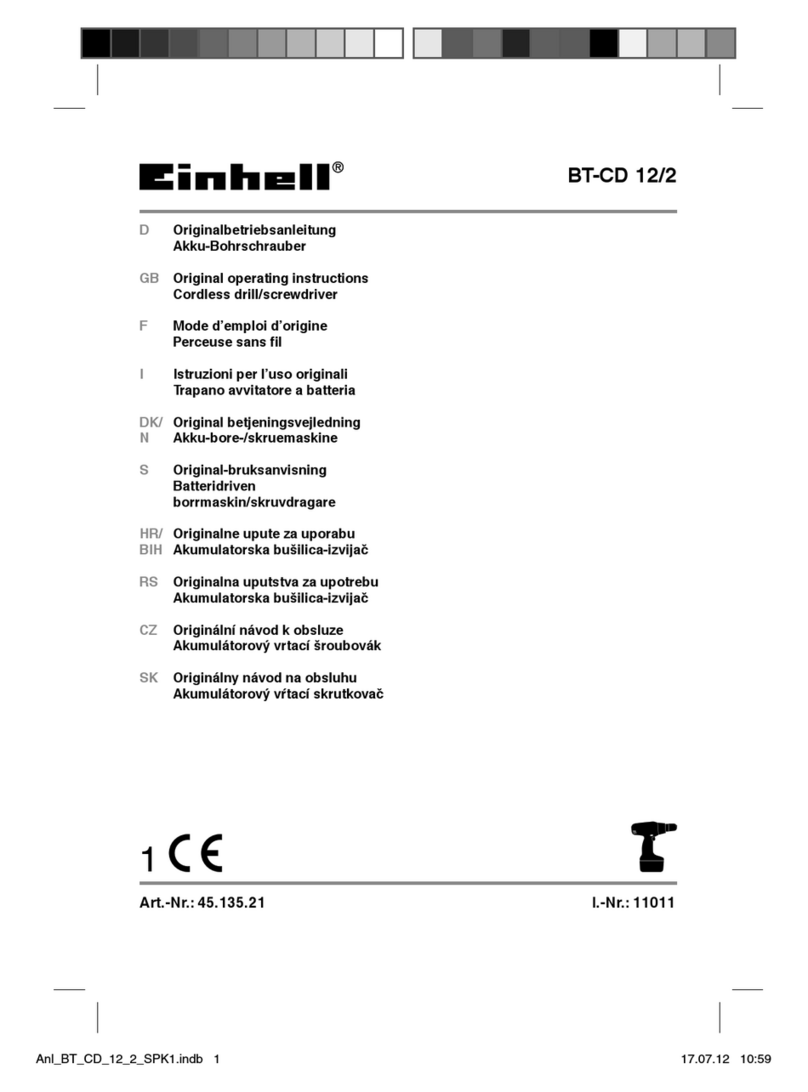
2.3 Adjustment of torsion spring return force
•Locate press head (3) in most upper working height position and remove the stroke reducer (8).
•Move the ram downwards till toothing is out of contact.
•Hand lever (1) forward (force gets higher) hand lever backward (force gets lower).
•Assemble ram (2) and stroke reducer (8).Attention: Don't overstrain the spring.
2.5 Return stroke lock (optional) Attention: requires a minimum of 20 mm of ram stroke
If you change the ram stroke adjustment (new BDC-position), please adjust the return stroke lock.
•Loosen locking screw (14) permitting the turning of cam (16) with slight resistance.
•Move handle until ram is fully extended.
•Turn cam (16) clockwise until stop bolt (15) release position is reached.
•Tighten locking screw (14).
•Check ram stroke for proper release position.
Proper operation of the return stroke lock is predicated on the stop bolt (15) releasing when the press ram has
reached its full extension.
Attention: Should you not be able to reach full extension of the ram stroke then you will be in a locked mode
and the ram can not be returned to its home position.
Block position I = 13mm before B.D.C., block position II = 4,5mm before B.D.C., release precision* 0.07 mm
* Minimum remainder stroke before BDC-limit for safe releasing of the return stroke lock.
2.2 Setting of working height
•Loosen head locking screws (10).
•Unfasten the adjustable stroke reducer (8), move the tool upon the workpiece and retight the adjustable stroke reducer.
•Adjust the press depth by fine tuning of the ram (6), and retight the locking nut (7).
2. Setup instructions
2.2 Réglage de la course de travail
•Régler l’hauteur de travail (10).
•Desserrer la réduction de course (8), conduire l’outil vers la pièce à travailler, serrer la réduction de course.
•Ajuster la profondeur avec le réglage précis (6) et arrêter le contre-écrou (7).
2.6 Déclencheur d’urgence du blocage de la course retour
En pressant le bouton d’arrêt d’urgence (19) la course retour est libérée dans les positions d’arrêt I et II
en cas d’urgence
2.6 Emergency release for return stroke lock
By pressing the emergency release button (19) the return stroke in locked positions I and II is released in emergency sitations
2. Mise en service
2.5 Blocage de la course de retour (optional) Attention: course minimale = 20 mm
En cas de modification de la course de travail (nouvelle position PMB) le blocage de la course de retour doit être
ajusté de nouveau.
•Desserrer la vis d’arrêt (14) jusqu’à-ce-que la came (16) se tourne facilement tournant sur la broche.
•Coulisseau avec levier à main jusqu’à l’arrêt dans la position PMB (9) et maintenir.
•Tourner la came (16) dans le sens des aiguilles d’une montre jusqu’à-ce-que celle-ci soit arrêtée par le boulon
d'arrêt (15) en position de déclenchement.
•Serrer bien la vis d’arrêt (14).
•Faire une course d’épreuve et contrôler l’attitude du couplage.
Le blocage de la course de retour est ajusté correctement quand le boulon d'arrêt (15) glisse, au moment
d’atteindre l’arrêt de la course PMB (9), sur la côté de déclenchement vers la came de course de retour
de la came (16).
Attention: Dans le cas où la position PMB n’est pas atteinte, la course de retour reste bloquée.
Position bloquée I = 13mm avant P.M.B., position bloquée II = 4,5mm avant P.M.B., précision de déclenchement* 0.07 mm
*Le restant minimum de la course avant P.M.B.-arrêt pour débloquer la course retour d’une manière fiable.
2.4 Échange du ressort de tension
•Desserrer les vis (11) et démonter la couvercle (12) Attention: Ressort sous tension.
•Exécution avec course de retour: démonter le circlip (17), desserrer la vis d’arrêt (14), enlever la came et dévisser
le disque (18).
•Lubrifier le nouveau ressort dans l’intérieur, échanger, monter la couvercle ou bien le blocage de la course de retour.
Indication: Le ressort s’accroche de nouveau automatiquement.
2.3 Réglage du ressort de torsion - force du rappel
•Placer la tête (3) dans la position de travail la plus haute et enlever la réduction de course (8).
•Mouvoir le coulisseau (2) vers la bas jusqu’à-ce-que l’engrenage soit hors contact.
•Levier à main en avant (force augmente), en arrière (force diminuit).
•Monter le coulisseau (2) et monter la réduction de course (8). Attention: Ne pas tendre trop le ressort.
2.4 Exchange of the torsion spring
•Unfasten screws (11) and remove coverplate (12). Attention: Spring stands under force.
•Configuration with return stroke lock: remove locking ring (18), unfasten locking screw (14), remove cam and
unscrew bearing disc (19).
•Grease the new torsion spring at the inside, exchange the old one, assemble coverplate and return stroke lock.
Notice:The spring is self slinging.
2.1 Handlever Mount handlever (1) to shaft and tighten it with a clamping screw. The fastening torque is from 6 Nm till max. 10 Nm
(for press No. 5 = 15 Nm)
Attention:The max.operating force at the handlever is 200 N (is not allowed to be exceeded)
2.1 Levier
Monte levier à ‘axe et fixe cela avec la vis de serrage. Le couple de démarrage est de 6 Nm jusqu’ à 10 Nm
(pour presse No. 5 = 15 Nm)
Attention: La force de manoeuvre max. au levier est 200 N .
2.7 Cleaning of Ram
•The ram has needs to be cleaned occassionally with a slightly oiled cloth.
•In any case do not use any solvent based cleaners, in order to avoid any dry running condition of the ram.
2.7 Nettoyage de coulisseau
•Nettoyez le coulissearu occasionnellement avec un chiffon légèrement huilé.
•N' utilisez en aucun cas des substances dissolvantes, parce que cela pourrait causer un courant sec du coulisseau.
